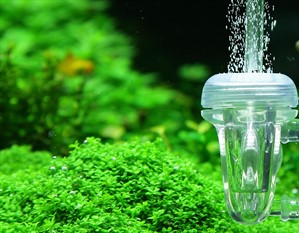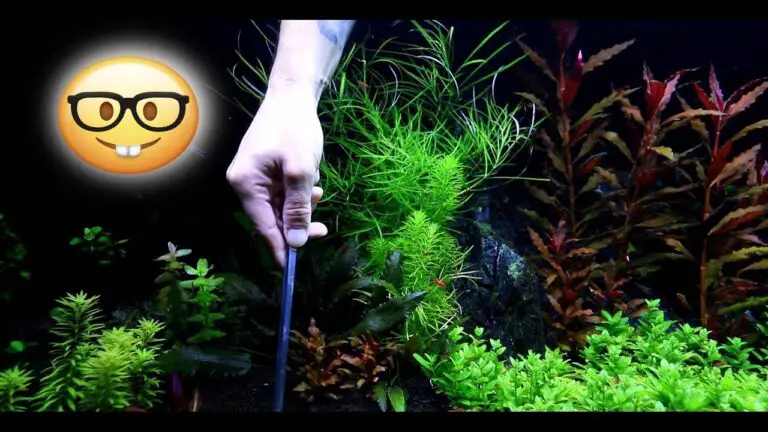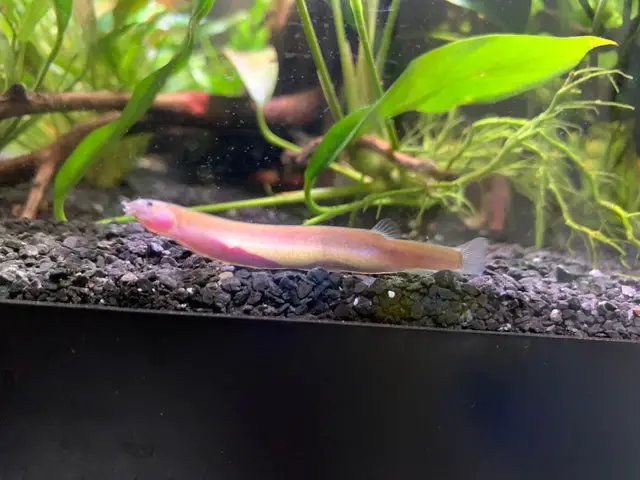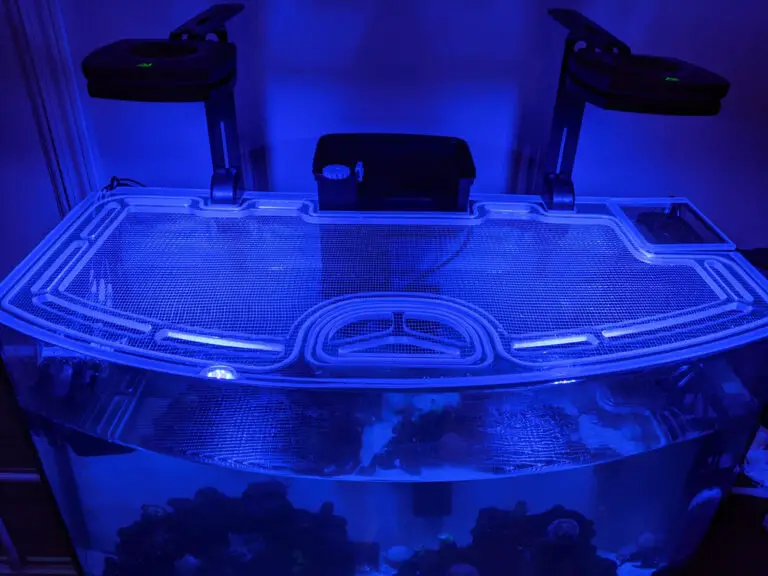Do You Need CO2 for Aquarium Plants?
Yes, CO2 is necessary for aquarium plants. Carbon dioxide (CO2) helps in the photosynthesis process which allows the plants to produce their own food from light energy and carbon dioxide.
Without sufficient levels of CO2, aquarium plants will not be able to grow properly nor withstand other environmental stresses such as fluctuating water pH or nutrient deficiencies.
An adequate supply of CO2 also helps promote a healthy environment by preventing algae growth that can quickly take over your tank if left unchecked.
As a result, it is critical for aquarists to monitor both the amount and quality of CO2 that they are providing their tanks with in order to ensure successful plant growth and health.
CO2 is essential for aquarium plants to grow and thrive.
Without it, they will become pale and weak due to a lack of sufficient energy, which can cause them to die over time.
CO2 helps provide the necessary nutrients that help strengthen their roots, stems, leaves and flowers.
CO2 also increases photosynthesis rates in your aquatic plants, allowing them to take in more light from the environment and convert it into usable energy for growth.
If you want your aquarium plants to remain healthy and vibrant for years on end then supplying them with an adequate amount of CO2 is key!
How to Add CO2 to Aquarium Naturally?
Adding CO2 to an aquarium naturally can be achieved by utilizing a live plant system.
This method uses the natural process of photosynthesis to produce carbon dioxide, which is then released into the water column and absorbed by plants as they grow.
By growing a variety of aquatic plants in your tank, you can provide an extra boost of CO2 for them to thrive and help maintain healthy levels in your aquarium.
You may also want to consider adding some specialized floating plants such as duckweed or hornwort that are known for their ability to absorb more carbon dioxide than other types of vegetation.
Signs of Too Much CO2 in Aquarium
Aquariums can be vulnerable to too high levels of carbon dioxide (CO2) in the water.
Signs that your aquarium has too much CO2 include a decrease in pH levels, unhealthy or dying fish.
Air bubbles forming on the surface of the water and even an increase in algae growth.
If you suspect that your tank is suffering from too much CO2, it is important to take action quickly by testing the water and adjusting its pH balance as needed.
CO2 in Aquarium for Beginners
CO2 is an important component of a healthy aquarium, as it helps to promote photosynthesis and create necessary nutrients for plants.
For beginners, adding CO2 to your tank can be tricky; however, with proper research and knowledge you can easily set up a safe system for your aquarium.
There are several methods that can be used when introducing CO2 into the water, such as pressurized systems or DIY options like yeast reactors.
It’s also essential to ensure that adequate lighting and other components are in place so that the plants have all they need to thrive.
Aquarium Plants That Don’t Need CO2
Aquarium plants that don’t need CO2 are a great way to provide your tank with natural beauty without having to invest in costly equipment.
Many of these plants, such as Java Ferns, Anubias and Cryptocoryne species can survive quite happily with just the nutrients they get from their environment.
They will still require light and regular water changes, but are much less demanding than other aquarium plant varieties which may require additional supplementation like carbon dioxide or fertilizers.
How to Measure CO2 in Aquarium?
Measuring carbon dioxide (CO2) levels in an aquarium is important for maintaining healthy aquatic life.
CO2 test kits are available which measure the level of dissolved CO2 in a tank and help to ensure that it’s within ideal ranges.
These kits generally use a chemical solution or tablet that changes color when mixed with water from the tank, indicating the amount of CO2 present.
Regular testing is recommended to prevent any fluctuations in pH levels or oxygen saturation caused by too much or too little CO2.
DIY CO2 Aquarium
DIY CO2 aquariums are a great way to provide your fish with a steady supply of carbon dioxide.
This is especially important for planted tanks, as the extra CO2 helps to promote plant growth.
DIY aquarium setups require some knowledge and expertise in order to be successful.
However, they can be an economical option that will save you money on tank setup costs.
With the right materials and equipment, such as diffusers, solenoids and regulators, you can set up your own CO2 system for your aquarium at home.
Signs of Low CO2 in Planted Aquarium
Low CO2 levels in a planted aquarium can be identified by slow growth of plants, yellowing or browning leaves, lack of coloration, and/or wilting.
When the concentration of carbon dioxide (CO2) is too low for an extended period of time.
It can cause plant tissue to die off due to inadequate nutrient uptake from photosynthesis.
Low CO2 levels also mean that algae will start taking over your tank as they thrive with less CO2 than what aquatic plants need.
If you observe any of these signs in your aquarium, test the water parameters and increase the amount of CO2 accordingly.
CO2 Aquarium Diffuser
A CO2 aquarium diffuser is a device used to dissolve carbon dioxide into an aquarium.
It works by taking pressurized CO2 from a canister and breaking it down into tiny bubbles that are released directly into the water.
This helps provide carbon dioxide for aquatic plants, which in turn boosts photosynthesis and promotes healthy plant growth.
The diffuser also helps maintain pH balance in the tank, as well as providing additional oxygen for fish and other aquatic life.

Credit: tropica.com
Can I Grow Aquarium Plants Without CO2?
Yes, you can absolutely grow aquarium plants without CO2. Aquarium plants that do not require carbon dioxide (CO2) are called low-tech or non-carbonated plants.
These types of plants usually grow very slowly and often need more light compared to other aquatic plants as they don’t have access to the nutrients provided by CO2.
Nevertheless, a planted tank without CO2 injection is still possible and many aquarists enjoy the challenge of creating a beautiful tank with only natural resources from within the aquarium itself.
Non-carbonated plant species typically include stem and mosses as well as certain hardy floating varieties such as duckweed, hornwort, water lettuce and giant salvinia.
The key to success lies in providing enough light for photosynthesis combined with proper fertilization.
Either through liquid fertilizer dosing or root tabs placed directly into the substrate.
Ensuring your chosen aquatic flora receives all the necessary minerals it needs for growth while avoiding any nutrient deficiencies caused by an unbalanced environment.
How Do I Know If My Aquarium Plants Need CO2?
If you are wondering if your aquarium plants need additional CO2, the answer is probably yes.
Aquatic plants require trace amounts of carbon dioxide (CO2) for photosynthesis and growth, just like land-based plants.
When it comes to fish tanks, an adequate amount of CO2 can be provided naturally from respiration of the inhabitant fish or through diffusion from the atmosphere.
However, many aquatic plant species benefit from higher levels of CO2 than what is usually present in a home aquarium environment.
If you have noticed that your plants are growing slower than usual or their leaves appear discolored.
They may not be getting enough carbon dioxide and adding more might help them thrive better in the long run.
Fortunately there are several methods available to increase CO2 in an aquarium such as using pressurized gas injectors.
DIY yeast reactors and liquid drops with fairly low startup costs that make it easy to keep your plant life healthy and happy!
Do I Need CO2 in My Aquarium If I Have Fish?
The answer to whether or not you need CO2 in your aquarium if you have fish is a bit more complicated than it may seem.
While adding CO2 to an aquarium can help create an ideal environment for fish, it also carries some risks.
If the levels of carbon dioxide become too high, it can lead to health issues and even death for the fish living in the tank.
On the other hand, having no CO2 at all can create difficulties as well.
Without sufficient oxygenation from plants and surface agitation, water quality could suffer and cause long-term damage to your aquatic life.
When deciding whether or not your aquarium needs CO2 injection depends on many factors such as how much light is entering the tank (affecting photosynthesis).
What kind of filtration system you are using (for adequate biological filtration), and what type of substrate/aquascaping material you are using (to provide nutrient-rich soils).
While having sufficient amounts of carbon dioxide in your aquarium will certainly benefit any aquatic life present within its waters.
Before making any changes be sure that proper research has been done so that there is minimal risk involved with introducing this gas into your home ecosystem.
What Aquatic Plants Do Not Need CO2?
Some aquatic plants do not require additional CO2 to thrive and can survive without it.
These types of plants are called low-light or low-tech aquarium plants as they are capable of photosynthesizing with the limited light available in most tanks.
Examples include Anubias, Java ferns, Cryptocoryne species, Dwarf Sagittaria, Vallisneria species and many more.
They generally have large leaves which allow them to absorb more light for photosynthesis than those of other aquarium plants that need extra CO2 supplementation.
Low-light aquarium plants usually don’t grow very fast but they do add a nice touch to your tank with their interesting shapes and textures.
These hardy aquatics are relatively easy to take care of since they don’t require special fertilizers or substrates like some high tech aquatic plant setups may need.
So if you’re looking for an easy way to add some greenery into your fish tank then consider one of these no-CO2 needed varieties!
Conclusion
CO2 is an important part of the aquarium ecosystem and plays a vital role in the growth and health of plants.
Proper levels are necessary to ensure healthy plant growth, however it can be difficult to maintain these levels without additional supplementation.
While not all tanks need additional CO2, those with a higher demand for nutrients or heavily planted tanks will benefit significantly from adding it.
Keeping an eye on tank parameters and making sure that your plants have enough Co2 is essential for a thriving aquatic environment.





